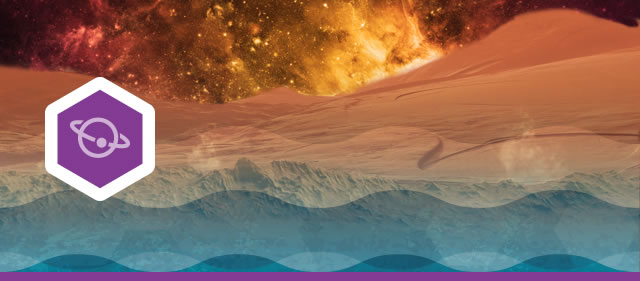
About 4.5 billion of years ago, in a small solar system with a rather weak sun, were two “Goldilocks” planets. That’s what scientists call planets that could harbor life: not so hot as to burn it up, not so cold as to be prohibitive, but temperate: just right. The two planets had similar conditions – comparable basic elements, age, geography – and yet life formed on one and not the other. One became oxygenated, and became our Earth; the other became desiccated, and we call it Mars.
Despite its dryness, however, Mars certainly looks as though it once had flowing water: there are empty riverbeds, lakes, and valleys carved deep into its surface, convincing early astronomers that it must be Earth-like. And thanks to the Mars rovers, we know that water exists on Mars – but is now frozen in the planet’s polar ice caps. In fact, climate models indicated that Mars has always been frozen. How do we reconcile those models of a bitterly cold, parched planet with the evidence of flowing water?
One way is to create a different model. That’s the approach taken by the Weizmann Institute of Science’s Dr. Itay Halevy and Brown University’s Dr. James Head III: they developed a new climate model of Mars, one that incorporated elements related to short – yet powerful – volcanic eruptions.
In previous work, Dr. Head helped determine that Mars’s dry lakes and valleys “date to approximately 3.7 billion years ago, coincident with a period of high volcanic activity.” And it turned out that volcanoes were the ingredient missing from the earlier climate models.
On Earth, volcanic eruptions lead to short-term cooling, as aerosols from the explosion block sunlight. But Mars’s very dusty atmosphere, the two scientists reasoned, might react differently.
To create the model, they first had to determine how big the fiery eruptions on Mars were. By studying its volcanic rock formations, they determined that the bursts were fierce: likely hundreds of times the size of an average eruption here. And besides their magnitude, there was duration: the Martian volcanoes may have erupted not for days, as on Earth, but for many years – even a decade – at a time.
This means that the amount of gas put into the atmosphere would have been significant – certainly enough to have an impact. And the scientists’ simulations showed that sulfur dioxide, a greenhouse gas, was among those produced by the volcanoes. The new model indicated that putting such gases into the atmosphere, even temporarily, would ultimately create a net warming effect – just warm enough to unfreeze the water and let it flow.
Dr. Halevy and Dr. Head concluded that this periodic volcanic activity led to warmer conditions that, while sporadic, may have lasted from decades to centuries. Long enough to create wet spells during which the Martian landscape had flowing rivers and streams, lakes, pools: the water of life, and enough to make Earthlings keep looking to this other “Goldilocks” planet, our closest neighbor, and wonder if it was ever, at some point, “just right.”
